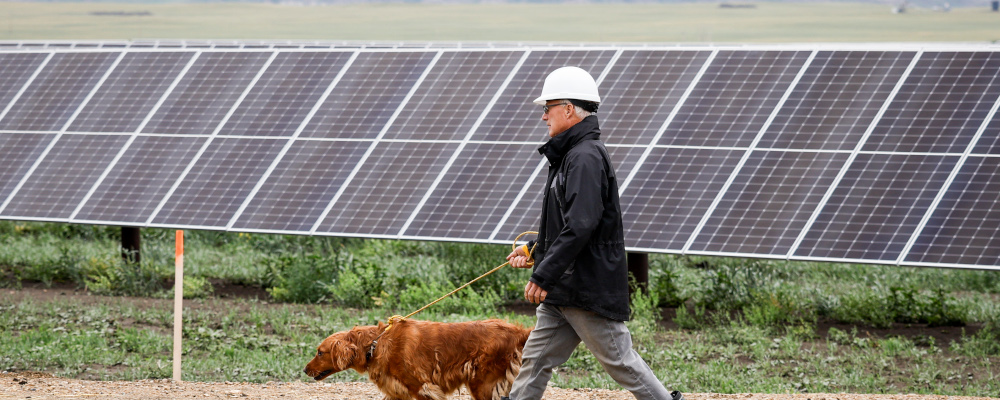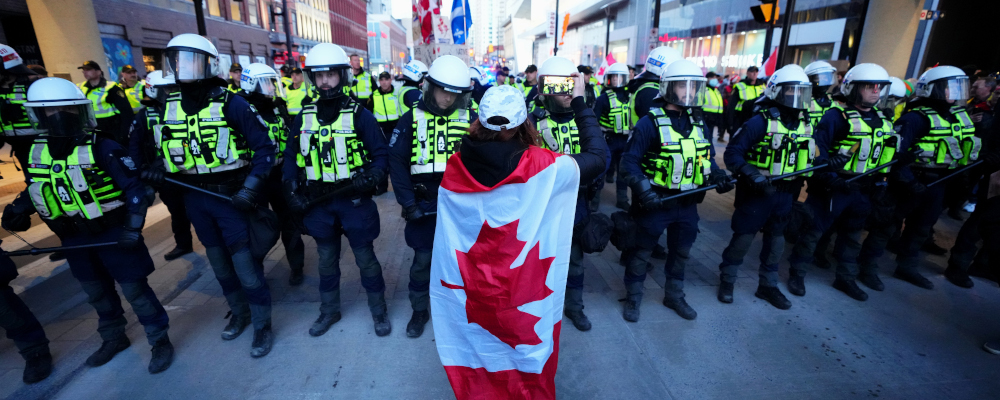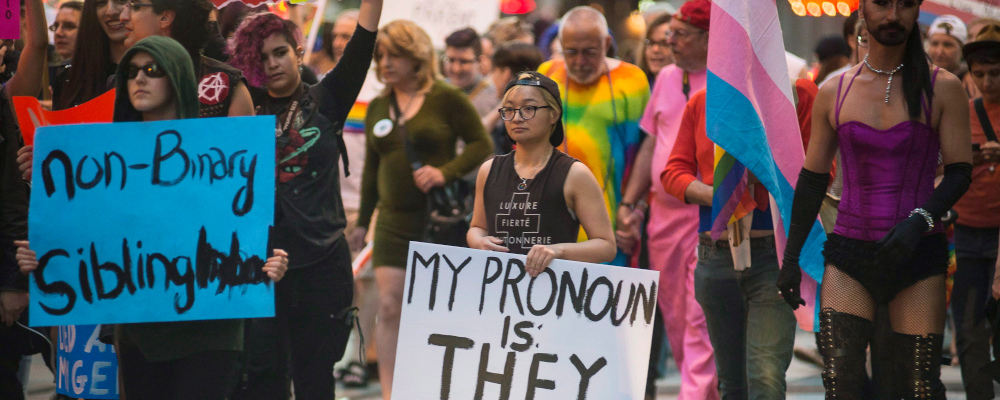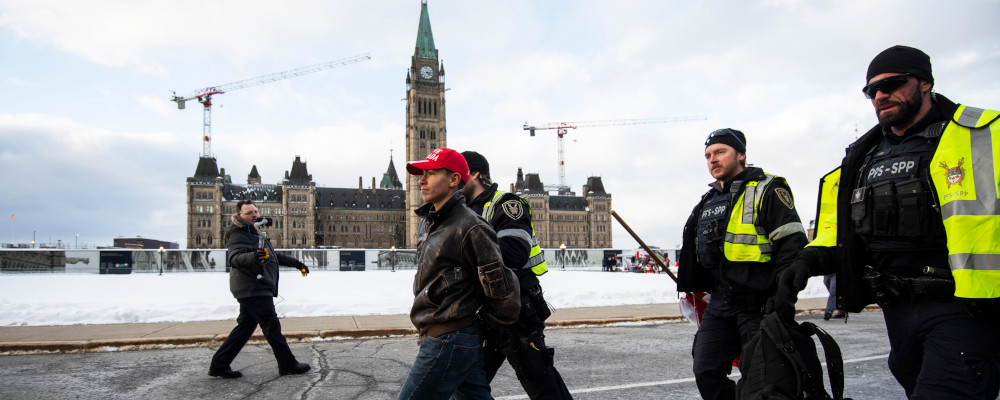Two Saturday evenings ago, something unprecedented happened in the Province of Alberta. Provincial residents received an emergency alert notification asking them to conserve electricity use as Alberta’s electricity system, operated by the Alberta Electric System Operator (AESO), was in a level 3 grid alert. Extreme cold, which brought with it low wind, combined with a few unanticipated outages from natural gas generators, left Alberta on the cusp of relying on load shedding to maintain the stability of its grid. Just before the emergency alert was sent out, the last resource keeping us going was energy storage.
Please bear momentarily with some technical details. Energy storage resources are grid-connected assets, such as batteries, that can take in energy at one time—charging—and give it back at a later time—discharging. This storage ability has different uses, but most simply it lets us store energy from times of low demand and use it at different times of high demand. Just like power lines let us move energy across space, energy storage lets us move energy across time. Most other supply chains, like fossil fuels, agriculture or even simply product manufacturing have long used storage in the form of storage tanks, grain elevators, or warehouses. Storage allows these supply chains to be optimized and avoids the complexities and difficulties of needing to supply products in real time to directly match demand.
While lithium batteries, similar to the ones in our phones, laptops, and increasingly EVs, are the bulk of contemporary energy storage installations, energy storage can take many other forms, such as pumped hydro, compressed air, thermal storage, flow batteries, and more.
Returning to the emergency alert on January 13, in the hours leading up to it, storage was playing a critical role for the grid by providing “operating reserves.” This means that the province’s 190 megawatts of storage capacity was standing by, ready to discharge in the case that the AESO needed them during an emergency or reliability event. By charging during times of low demand and discharging in times of high demand, storage can optimize how electricity from our generators makes it to customers, relieving strain on the system in the process. As demand on the grid ticked up and Alberta’s generators were unable to keep up, storage resources were called on to fill in the gap.
Unfortunately, due some of the legacy structures of our electricity market and regulations, storage is still a relatively nascent resource in Alberta and could only hold off the emergency alert for an hour or two. The emergency ultimately passed without serious consequence but it’s a powerful sign that something needs to change. Increasing Alberta’s energy storage would help the province meet peak demand, potentially avoiding the need for future emergency alerts.
Storage can also provide far more than just reliability—it is also a boon for affordability. Storage takes low-cost electricity, charging when demand is low or when renewables are plentiful, and discharges at higher-priced times, such as when demand is high and renewable output is low. More competition during high-priced times brings down the cost of high-priced hours and stabilizes the cost of electricity, to the benefit of Albertans and our economy.
Other provinces have recognized these benefits and are acting to enable investment in storage, at scale. Ontario is a good example. The province is currently building over 2,500MW of battery storage to meet critical capacity needs while ensuring Ontario’s clean electricity advantage is maintained. Going further, Ontario is advancing long-duration storage projects like the Ontario Pumped Storage Project and Marmora Pumped Storage Project that have the potential for greater reliability upsides including the ability to run for long periods of time.
Ontario has a diverse grid with a variety of resources on it: nuclear, gas, renewables, hydro, and more. Storage works well with all these resources. Indeed, much of the world’s existing pumped hydro storage was built in the 1970s and 1980s to provide a flexible complement to nuclear power, which isn’t meant to ramp up and down. Storage can optimize all resources while providing electricity when it is needed most, and Ontario’s pursuit of energy storage exemplifies this.
Nova Scotia is similarly investing in up to 400MW of storage, which will help it to develop its behemoth offshore wind resources and ease its transition off of coal power. This is especially significant considering the smaller size of the province as the result will be even more storage per capita than Ontario. Even our neighbours in Saskatchewan are building a 20MW battery near Regina.
Alberta can realize these benefits too. The province has 190MW of batteries installed now, but there are presently just under 3,000MW of standalone storage in development, with more storage in development paired with solar, wind, and gas facilities.
However, the legacy structure of our system inhibits the amount of storage able to be developed on Alberta’s grid. One example is that storage is currently charged as both a load and generator, leading to it being allocated at high system costs to operate. This doesn’t accurately reflect how storage uses the grid, as, unlike load or supply, storage isn’t adding new consumption or new energy into the system, but it can optimize the system for both. We see other markets around the world recognizing this and allowing for substantial investments in storage. Without updates to our market here, much of this investment may be left on paper.

Alberta has done some good work toward incorporating storage with the passing of the Modernizing Alberta’s Electricity Grid Act in 2022, otherwise known as Bill 22. It acknowledges that storage is a unique resource, distinct from load and generation. Unfortunately, this legislation is not yet proclaimed and implemented.
However, the fact remains that energy storage is a critical part of Alberta’s grid, now and in the future. The challenge moving forward will be updating legacy rules and structures to liberate the development of storage in our electricity market.
With a few relatively simple changes to how storage is treated, investment in storage can be supercharged. Implementing Bill 22 and creating a cost allocation structure for energy storage resources are not the only things to be done, but would accomplish much, and can be done right now.
Storage isn’t the only part of a reliable grid, but it is a crucial piece. With the stakes for creating a reliable, affordable, and sustainable grid this high, we can’t leave anything on the table. The recent emergency is unlikely to be the last one.
Recommended for You

Trevor Tombe: Canada’s resource sector is its productivity powerhouse

Christopher Hume: Funding civic infrastructure isn’t sexy but we’ll regret neglecting it—just ask Calgarians

Five Tweets on Calgary’s water shortage crisis

Kaisha Bruetsch: The economic case for clean electricity is now undeniable—just ask Ontario











